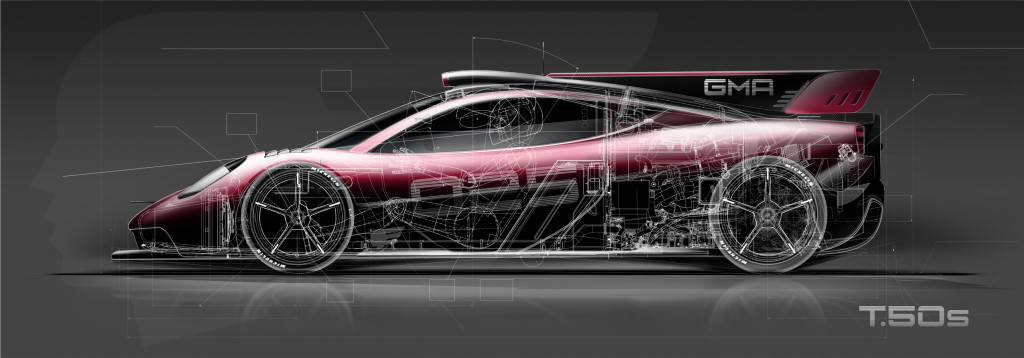Many automakers have claimed that their supercars produce enough downforce to drive upside down, but in a new video Engineering Explained’s Jason Fenske shows how Gordon Murray’s T50s might be the first car actually capable of pulling the stunt off.
The T50s is the track-only version of the recently-unveiled T50 supercar. Like the road-going version, the T50s has a rear-mounted fan inspired by Murray’s Brabham BT46B “Fan Car” Formula One racer. But while the T50 has six modes for this fan, the T50s only has one—high downforce.
In the T50s, the fan spins at a constant 7,000 rpm to continuously generate that downforce. The car gets a number of other aerodynamic add-ons as well, including a roof scoop that works as a ram-air intake for the engine, a stabilizing fin like the ones used on Le Mans prototypes, and a large rear spoiler.

Gordon Murray T.50s
How does that allow the T50s to drive upside down? In order for that to happen, the downforce needs to cancel out the force of gravity, preventing the car from falling. The T50s might have enough downforce for that, and it can run at the sustained high speeds needed to continue generating that downforce, Fenske said, adding that Car and Driver estimated a top speed of 210 mph would be required.
At 210 mph, the T50s should behave like a regular car driven at average speeds, but only as long as it’s driven at a steady speed in a straight line, Fenske said. Any braking or steering would upset the balance needed to keep the car upside down. Driving upside down would also require changes to the oil and fuel systems, which aren’t designed to work inverted, Fenske noted.
Watch the full video for more details on the T50s and its downforce-generating abilities. In addition to more aero aids, the T50s gets a more powerful version of the T50 road car’s 3.9-liter Cosworth V-12, with 690 horsepower (or 720 hp with ram air). However, it also swaps the road car’s manual transmission for a paddle-shifted gearbox. Just 25 cars will be built, priced at $3.6 million each. Production is scheduled to start in 2023, or a year after the road car.
